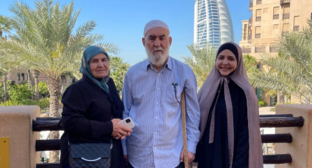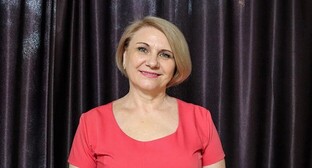28 April 2003, 19:45
Novocherkassk
City in Rostov oblast, oblast subordination, 51 km north-east of Rostov-on-Don. Located on the right elevated bank of the Aksay River (the right arm of the Don), at its confluence with the Tuzlov River. Railway station in the Likhaya - Rostov-on-Don line. A motor road junction: the Moscow - Voronezh - Rostov-on-Don highway runs near Novocherkassk. Population (1992 est.) 188.3 thousand, (1897 est.) 52 thousand, (1926 est.) 62 thousand, (1939 est.) 81 thousand, (1959 est.) 123 thousand, (1970 est.) 162 thousand, (1979 est.) 183 thousand.
Founded in 1805 by the army ataman М.I. Platov as the new administrative centre of the Don Cossack area (referred to as oblast since 1870) instead of Cherkassk (the present stanitsa (Cossack village) Starocherkasskaya), inundated by annual spring overflow of the Don. Development of the regular plan of Novocherkassk and management of city construction was implemented by the military engineer F.P. Devolan: straight broad streets and large squares fitted the relief very well. In the 19th century, Novocherkassk was the centre of political life of the Don Cossacks. Development of trade and industry in the city was hindered by the highest decree (1840), prohibiting purchase of real estate and land in Novocherkassk by non-serving population; the army headquarters prohibited construction of industrial enterprises within a radius of 20 versts (= 20 x 3500 ft.) from the city. At the end of the 1860s, these restrictions were cancelled. By the end of the 19th century, Novocherkassk had 28 small enterprises (an iron foundry, a saw-mill, brickworks, breweries, wineries, etc.). In the 1870s, construction of the Millerovo - Rostov-on-Don railway line allowed connecting Novocherkassk to the railway system of Russia. In 1908, the population of the city reached 51.3 thousand people (including 24.6 thousand people of the Cossack class). At the beginning of the 20th century, Novocherkassk became an important centre of education and culture on the Don. The city had an ataman technical school, a theological seminary, a normal school, a Cossack military school, a cadet corps, a seminary for young ladies, a school for surgeon's assistants, 3 male grammar schools, 4 female grammar schools and other secondary educational establishments; in 1907, Don Polytechnic Institute (the first higher educational establishment on the Don) was opened followed by Don Veterinary Institute in 1915.
During the Civil War, Novocherkassk was the bulwark of anti-Bolshevistic Cossacks and repeatedly served as an arena of fights.
At the end of the 1920s, Novocherkassk became the city of students. At the early 1930s, 14 high and technical schools, training about 10 thousand students functioned here. In the 1930s, Novocherkassk built a locomotive works, a machine-tool plant, reconstructed the factory of mining and drilling equipment, a shot-casting works. The city suffered greatly during the Great Patriotic War of 1941-1945; it was occupied by Nazi troops from July 25 1942 to February 13, 1943.
Life of the Don historian V.D. Sukhorukov was closely linked to Novocherkassk; Novocherkassk grammar school was attended by the geologist and geographer I.V. Mushketov; the painter of battle-pieces М.B Grekov also lived in Novocherkassk.
Present Novocherkassk is a large industrial centre of Rostov oblast. The leading industries are mechanical engineering and chemicals. The former locomotive works grew into an industrial association manufacturing electric locomotives. PО Маgnit (manufacture of permanent magnets); the Nikolsky engineering plant (manufacture of mining equipment), a petroleum engineering works, a machine tool plant, an electrode works, a synthetic product plant (natural gas serving as feed stock), a chemicals plant, etc. Flavouring industry (a meat-processing plant, a mill house, a winery, etc.). A lime-and-sand brickworks, etc. The city is supplied by the Novocherkassk state single-area power station (of 2,400 kW capacity). Research and design establishments, including the Institute of Research, Design and Technology of Electric Locomotive Building. The State Design Institute of Electrical Industry. North Caucasian Zonal Veterinary Institute. A polytechnic institute, Don Reclamation Engineering Institute (at the station of Persianovka), the Higher Military School of Communication. V.F. Komissarzhevskaya Drama Theatre (since 1825). The Don Cossack History Museum (open in 1899; history of the Don area, relics of the Don Cossacks, works of Russian and West-European artists), the memorial house of the painter of battle-pieces M.B. Grekov, the memorial house of the artist I.I. Krylov (who was born in Novocherkassk and spent the larger part of his life there).
The central part of Novocherkassk is located on the rising ground (the tract of Biryuchy Kut) and was built up under the regular plan of the early 19th century (3 broad prospects with parkways connected by squares radiating streets. The whole architectural and planning complex is united by the high-rise dominant of the Ascension Cathedral Army Church (the 1805-1905s, architect А.А. Yashchenko), located in Yermak Square with the monument to Yermak (1904, sculptor V.А. Beklemishev, designer М.О. Mikeshina) and the monument to the field ataman Y.P. Baklanov (1911). In the 1816-1817s, entries into the city were decorated with 2 triumphal arches to commemorate the Patriotic War of 1812 and overseas campaigns of Russian troops in the 1813-1814s. There is St. Michael the Archangel's Church (1870) in the spirit of eclecticism in Azov Square. The 19-century building-up in rows includes private stony and wooden Empire residences, frequently with a complex of dependencies (stables, provision warehouses, coach-houses, etc.). The architectural monuments of the second half of the 19th century include the army guardhouse (1856), the ataman's palace (1863), buildings of the Cadet Corps (1889), Mariinskaya female grammar school (1885), a theological seminary (1883), the Don Museum (1899), Aleksandro-Nevsky church in the Russian-Byzantian style (the 1891-1896s). Numerous private Art Nouveau residences ("Dom s sovoy" (Owl House), 1910) were built at the beginning of the 20th century.
Near Novocherkassk, there is a farm of Maly Mishkin, the patrimonial manor of the ataman М.I. Platov (the 1751-1818s).





Комментирование через Кавказский узел